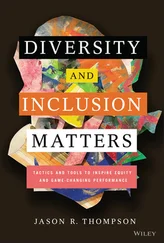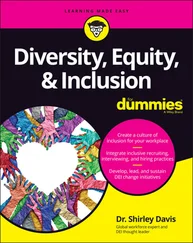CHAPTER 3 Why Should We Care?
Three years ago, a high school student named Sanaika reached out to me to ask if she could volunteer for GEN. I confess that I was slow to answer, but she was persistent. She messaged me on LinkedIn, found me on social media, and sent multiple emails. She was going to make herself heard.
I had some reservations about taking on a high school student. I wasn't sure what I could hand over to her. She didn't even have her driver's license yet. What was our liability for a minor? But her messages were so thoughtful and persuasive that I agreed to a one-hour phone call.
Sanaika impressed. She was the head of her school's refugee alliance club; she volunteered playing music for senior citizens; she was partnering with her city's chamber of commerce to pilot transportation options for low-wage workers. She had her sights set on becoming an international human rights lawyer.
I was still hesitant. Then I asked her why she wanted to volunteer for GEN.
“My friends and I are all working really hard to go to college and do big things in the future,” she started, “but I already see the girls being treated differently. They're not called on as often. They're called loud if they speak up. And some of us are going to keep working hard anyways, but we know what bias is, and I don't know what happens to all this hard work if we end up in businesses that are still biased. It's like all our hard work will be wasted.”
She shared how she, herself, was already coming up against the stumbling blocks of bias. “Being an Indian and a woman, I feel like there's a lot of animosity toward me. It could be a major problem if everyone's thinking this way in the future, because these people are going to be CEOs of companies one day. If this is the same attitude they're going to show toward employees, I don't know how the world's going to progress.”
Years later, I still see the moment I said “yes” to Sanaika as one of the best decisions I've made for GEN. Sanaika wasn't a charitable mentoring project. She furthered our organization's mission. She brought perspectives I hadn't considered. Her ability to see past herself to her community and anticipate the future—these were leadership skills. And we almost missed out.
If businesses in the future continue to miss out on Sanaika, the way we almost did, “How,” as she asked, “is the world going to progress?”
When I say that Sanaika is the future of work, I don't mean that in a figurative sense. Today in the US, the workforce is 47 percent female. 1 Forty-four percent of millennials, who make up the largest portion of the workforce, are non-white, 2 and the majority of the US population will be non-white before the year 2050. 3 Ten years from now, if you were to randomly select an employee, the odds are good that this workforce representative would look a lot like Sanaika.
Race and gender aren't the only facets of our workforce identity that are rapidly changing. Approximately one in six adults in America is considered to be neurodiverse, 4 meaning they experience different neurological functioning than the majority of the population. The age of the average employee is also shifting. Over the past 25 years, the percentage of workers aged 55+ has doubled, and 20 percent of the workforce is now 55 years of age or older. 5
Employees are also facing more caretaking demands than previous generations. As longer lifespans have become the norm, more adult children of retirees find themselves “sandwiched” between caring for their own young adult children and their retired parents, who are now living into their late eighties and nineties. According to an AARP survey, 6 in 10 unpaid caregivers also hold paying jobs. 6
Finally, a Gallup survey from 2021 found that more adult Americans are identifying as lesbian, gay, bisexual, or transgender with each passing year, and one in six adults in Generation Z identifies as LGBTQ. 7
These shifts all impact how employees experience the workplace. DEI is now more than a “nice to have” or a compliance requirement to be minimally satisfied. Getting DEI right means getting access to the next generation of talent.
Not only is today's workforce more diverse, they also care about inclusion more than previous generations. A 2020 hiring survey revealed that 83 percent of Gen Z candidates prioritize a company's commitment to diversity and inclusion when choosing where to work. 8 Ninety-four percent of millennials said they consider whether a business is an ethical employer before purchasing from them, 9 and multicultural consumers comprise almost 40 percent of the total US population. Non-white consumers are expected to comprise the majority of the US population by 2040. 10
It's not surprising that investors are following consumers. In 2014, Google released its first workforce diversity report, pressuring other companies to do the same. As more and more businesses followed Google's lead and released their own reports, researchers had a chance to answer a long-debated question: Do investors actually care if a company is diverse?
Margaret Neale, an organizational psychology professor at Stanford's School of Business, studied shareholder reactions to nearly 60 diversity announcements made by publicly traded firms between 2014 and 2018. The study was largely comprised of firms from the financial and tech sectors, including companies such as JPMorgan, BlackRock, eBay, and Facebook. The researchers measured each firm's stock returns on the day of their diversity announcements and found that stock prices increased more when higher levels of diversity were reported. In the tech sector specifically, investor support was even more positive when diversity numbers were higher than Google's.
When companies delivered reports in subsequent years that did not show any increase in diversity numbers, stock prices did not rise.
“This goes beyond saying diversity is a good idea because it's ethical,” Neale noted. “Shareholders are saying, ‘If you're not as diverse as we want you to be, there are going to be economic consequences.'” 11
Investors are demanding more than just diverse representation. They're pushing companies to eradicate inequitable policies. Nia Impact Capital is one of many investor funds leading the charge by challenging Tesla to end its use of mandatory arbitration. Forced arbitration came under fire when the #MeToo and Black Lives Matter movements exposed how it's often used as a tool to stifle harassment and discrimination complaints. The Nia fund brought a proposal to the floor of Tesla's annual shareholder meeting, asking the electric car maker to prepare a report on its use of employee arbitration. 12 When Tesla's board pushed back, several other institutional shareholders, including Calvert Research & Management, and proxy advisors Institutional Shareholder Services Inc. and Glass Lewis, stepped up to voice their support of the proposal.
Nia has also leveraged its assets to achieve progress elsewhere. In a celebrated decision, IBM accepted a Nia-led proposal to increase transparency around the company's workplace practices and report publicly on the effectiveness of its diversity, equity, and inclusion programs. The fund also succeeded in advocating for cybersecurity giant Fortinet to compile and release annual diversity reports.
Nia is just one example of the kinds of Environmental, Social, and Governance (ESG) funds that are pushing businesses to evolve. Investments in ESG funds doubled in 2020, accounting for 25 percent of US stock and bond mutual funds, a huge leap from the one percent share they held in 2014. 13 Younger investors appear to be driving this shift, and their accumulating wealth will continue to follow companies that go beyond talk to meaningful action.
Читать дальше












